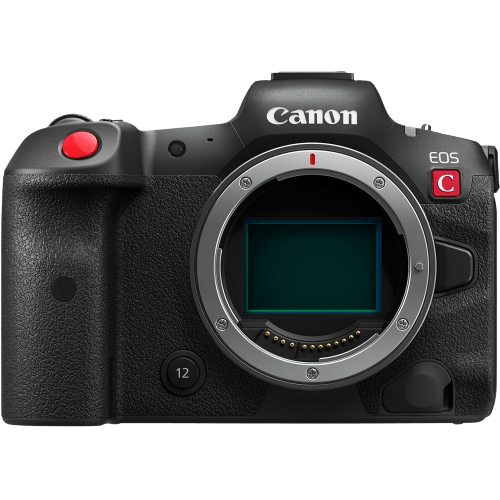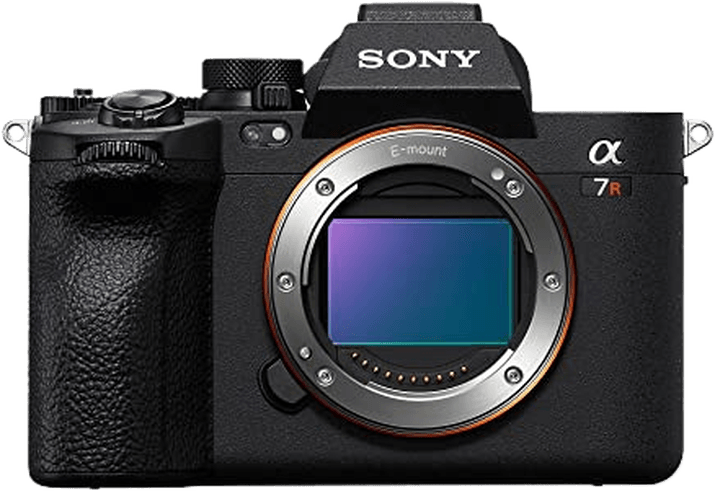Canon EOS R5 C vs Sony a7R V Comparison
Canon EOS R5 C

Sony a7R V

The Canon EOS R5 C takes the lead with a score of 87/100, while the Sony a7R V trails close behind with 85/100. Both cameras are mirrorless, released in 2022, and share similar features. However, the Canon EOS R5 C edges ahead with a higher score.
One aspect the two cameras have in common is their release year, with both launching in 2022. The Canon EOS R5 C was announced on January 19th, while the Sony a7R V was announced later on October 26th. The Canon EOS R5 C is slightly larger, measuring 142 x 101 x 111mm, and weighs 770g. On the other hand, the Sony a7R V is more compact, with dimensions of 131 x 97 x 82mm, and a lighter weight of 723g.
The Canon EOS R5 C boasts a higher launch price of $4499, reflecting its superior score. In contrast, the Sony a7R V is more affordable at $3999, making it a better option for budget-conscious photographers.
To sum up, the Canon EOS R5 C takes the lead due to its higher score, but the Sony a7R V remains a strong contender with its more compact size and lower price. Ultimately, the choice between these two cameras will depend on individual preferences and budget considerations.
Canon EOS R5 C vs Sony a7R V Overview and Optics
The Canon EOS R5 C outperforms the Sony a7R V in optics with a score of 88/100 compared to Sony’s 85/100. Both cameras share several specifications, including a CMOS sensor, full-frame sensor size, and image stabilization. They also have different lens mounts, with Canon using the RF mount and Sony featuring the FE mount.
The Canon EOS R5 C excels with its faster shooting speed of 20 frames per second, compared to Sony’s 10 frames per second. This advantage allows the Canon camera to capture fast-moving subjects more effectively. Additionally, the Canon EOS R5 C has a superior DXOMARK score for its sensor at 97, while the Sony a7R V scores 94. The higher DXOMARK score indicates better overall image quality and low-light performance for the Canon camera. The Digic X processor in the Canon EOS R5 C also contributes to faster image processing and better performance.
On the other hand, the Sony a7R V has higher megapixels at 61, compared to Canon’s 45. This difference means the Sony camera can capture more detailed images, which is beneficial for large prints and cropping. However, the higher megapixels come at the cost of slower shooting speed.
In terms of optics, the Canon EOS R5 C stands out with its faster shooting speed and superior sensor performance. It is a better choice for those who prioritize capturing fast-moving subjects and overall image quality. The Sony a7R V, with its higher megapixel count, may be more suitable for photographers who require high-resolution images for large prints or extensive cropping. Both cameras offer image stabilization and full-frame sensors, making them competitive choices for various photography needs.
Canon EOS R5 C vs Sony a7R V Video Performance
The Canon EOS R5 C and Sony a7R V both excel in video capabilities, with both cameras earning a video score of 100/100. These two cameras share several features in common, such as 8K maximum video resolution and built-in time-lapse functionality. They also both support a maximum video frame rate of 120fps.
The Canon EOS R5 C has an advantage in terms of maximum video dimensions, offering 8192 x 4320 pixels. This higher resolution provides more detail, which is particularly useful for professional video production or large-format displays. The larger video dimensions allow for more flexibility in post-production, such as cropping or stabilizing footage without losing quality.
On the other hand, the Sony a7R V has slightly smaller video dimensions, with a maximum of 7680 x 4320 pixels. While this is still an impressive resolution, it falls short when compared to the Canon EOS R5 C. However, it is important to note that this difference may not be noticeable to the average user and may only be relevant in specific professional scenarios.
Both cameras have exceptional video performance, but the Canon EOS R5 C holds a slight edge due to its larger video dimensions. This advantage could be crucial for professionals who require the highest possible resolution for their projects. Nonetheless, the Sony a7R V remains a strong contender in the video department, and its capabilities will likely satisfy the majority of users. When choosing between these two cameras, one should consider their specific needs and preferences, as both options provide outstanding video quality.
Canon EOS R5 C vs Sony a7R V Features and Benefits
The Canon EOS R5 C and the Sony a7R V both have a feature score of 87/100, making them equal in this aspect. They share several common specifications, such as a 3.2-inch screen size, 2,100,000-dot screen resolution, touchscreen capabilities, flip screen, and the absence of GPS. Additionally, both cameras have WIFI and Bluetooth connectivity options.
The Canon EOS R5 C stands out due to its strong performance in the video department. It offers 8K video recording, which is a significant advantage for filmmakers and content creators who require high-resolution footage. The R5 C also has a more extensive selection of lenses available, providing users with greater flexibility and creative options when shooting.
On the other hand, the Sony a7R V has its strengths. It has a higher-resolution sensor, which can produce more detailed images, especially when paired with high-quality lenses. This makes it a more suitable choice for photographers who prioritize image quality and resolution.
To sum up, the Canon EOS R5 C is an excellent choice for those who require top-notch video capabilities and a wide range of lenses, while the Sony a7R V is better suited for photographers who value high-resolution images. Regardless of the camera chosen, users can expect a similar level of features and functionality.
Canon EOS R5 C vs Sony a7R V Storage and Battery
The Sony a7R V outperforms the Canon EOS R5 C in storage and battery with a score of 73/100 compared to Canon’s 68/100. Both cameras share similarities, such as having two memory card slots and USB charging capabilities. However, there are also differences that set them apart.
The Sony a7R V excels with its longer battery life of 530 shots, utilizing the NP-FZ100 battery. Additionally, it accepts SD/SDHC/SDXC memory cards and the faster CFexpress Type A cards for versatile storage options.
On the other hand, the Canon EOS R5 C has a shorter battery life of 320 shots, using the LP-E6NH battery. Its storage options include SD (UHS-II compatible) cards and the larger CFexpress B cards.
Taking these factors into account, the Sony a7R V proves to be superior in terms of battery life and offers similar storage capabilities. The Canon EOS R5 C, while not as strong in battery performance, provides a different memory card option with the CFexpress B cards. Ultimately, the choice between these cameras depends on the user’s priority on battery life and storage preferences.
Alternatives to the Canon EOS R5 C and Sony a7R V
Are you still undecided about which camera is right for you? Have a look at these popular comparisons that feature the Canon EOS R5 C or the Sony a7R V:

